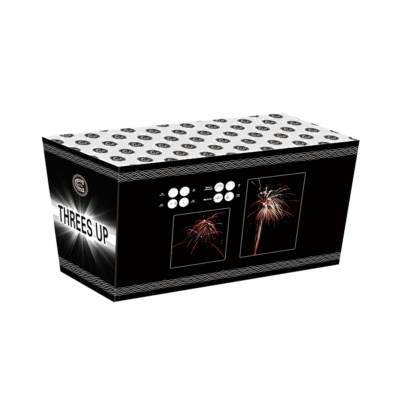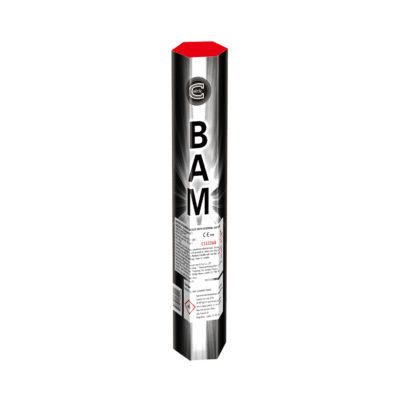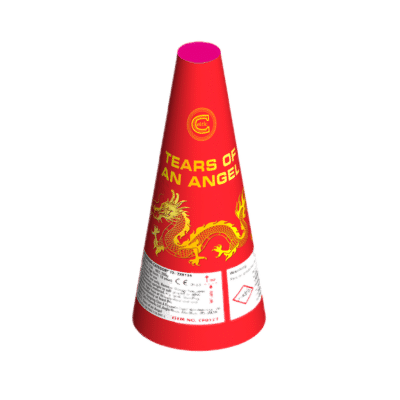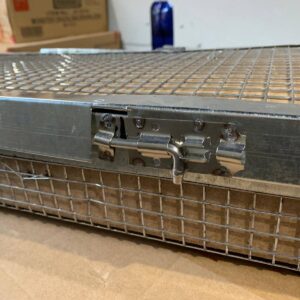Fireworks safety Guide
Unboxing your fireworks
When your order arrives unbox the fireworks and check that you have everything you ordered. In the unlikely event that you find something is missing or damaged you can email us. For missing items email missing@lovefireworks.co.uk and for damaged items email damaged@lovefireworks.co.uk. Some items may arrive in a metal cage known as pyromesh. Items in this cage would be in a higher classification (more dangerous) for storage and transport if they were outside of this cage so where possible store them in the transport box inside the cage. Some cages have little sliding locks to keep them shut, for others you will need a pair of tin snips to open the cage to access the fireworks. Either way, we recommend that you wear suitable gloves when handling the pyromesh cages as parts can be sharp.
Storing your fireworks
Once you have unboxed your fireworks to check that everything is there we recommend re-packing them back into their shipping cartons until the day of your display. These cartons are designed and manufactured for transporting and storing your fireworks safely. Keep the fireworks in a cool, dry place away from damp and any sources of heat. A locked garage is usually ideal. If you have children make sure that they are aware of the dangers of fireworks and keep them out of harms way
Hardware you’ll need to get before the display
You should have the following items of hardware to hand;
- A hammer
- A supply of wooden pegs or metal pins on which to attach the fireworks
- Tall poles for any wheels
- Strong tape/cable ties/tie wire
- A supply of wooden boards of various sizes on which to place cakes and fountains
- A supply of nails of various sizes
- Buckets of sand in which to bury smaller items
- Rocket Launch tubes (make sure you have ordered enough)
- Portfires (make sure you have ordered enough)
Safety equipment you’ll need to get before the display
You should have the following items of safety equipment on hand;
- A torch to read the instructions on each firework
- A handheld torch or better still a head torch
- A pair of cotton overalls or a thick jacket made of fire resistant material
- Strong boots
- Gloves
- A hard hat
- Ear defenders
- Safety goggles or other eye protection
- An extinguisher or buckets of water to put out any small fires
Before the day
If there is more than one of you firing the fireworks make sure that one of you is in overall control and that every member of the team familiarises themselves with the fireworks and knows what they are doing. Everyone firing or handling the fireworks must be aged 18 or over and should have a set of gloves, goggles or other eye protection, a hard hat, overalls or other suitable fire retardant clothing, ear defenders and boots.
Inform any local residents about the display as well as care homes, hospitals, animal owners and the local police, fire brigade and coastguard where necessary. Informing these groups of people is particularly important if using fireworks outside of the usual times that people expect to hear them.
On the day of the display
Arrive nice and early as displays ALWAYS take longer to set up than you think – especially in inclement weather. The display site should be set out with the smaller items (wheels/fountains) at the front and closest to the spectators and the larger rockets at the back furthest away from the spectators (see diagram below). Make sure that you have at least the minimum safety distance from your audience to the fireworks that you are using and always ensure that the fallout area is large enough for the debris to land in and will be kept clear at all times. If the wind is blowing towards your audience you may need to think about rearranging the site or postponing your display.

Setting up and firing fireworks
For larger displays a lot of work can be done many hours prior to the display time. The fireworks can be set out in their positions, secured and wrapped in clear bags or cling film to protect them from the elements. A bit of prep work can take a lot of pressure off on the night itself. Be sure to follow the instructions on each firework. The guides below are to assist but ensure you know what each firework does and the dangers involved.

Setting up and firing: Rockets
- ALWAYS read the instructions on each firework.
- Be aware of the safety distances to spectators and firers
- Insert the launch tube into the ground angled slightly away from spectators or securely attach the launch tube to a stake or large pin firmly banged into the ground.
- Ensure that the tube is secure and cannot fall over.
- Ensure that there are no overhead wires.
- Place the rocket stick into the tube and ensure that the rocket is free to rise.
- Remove the orange fuse cover. Stand side on to the firework and light the tip of the fuse at arms length. Retire immediately to a safe distance.
- If it is raining you can cover rockets with a plastic bag but this MUST be removed prior to firing.
Setting up and firing: Small Cakes
- ALWAYS read the instructions on each firework.
- Place the cake on a wooden board ensuring that the base of the cake is supported.
- Bang in a wooden peg (or metal pin) so that the peg is between the firework and the audience. That way if the firework falls over it can only fall sideways or backwards and NOT towards your audience. Ensure the peg is sturdy.
- Tape the cake to the uprights and ensure that it cannot fall over.
- Ensure that there are no overhead wires.
- Locate the fuse which is usually found under an orange cover marked ‘FUSE’. Remove the cover and if necessary carefully pull it through any cellophane wrapping.
- Ensure that no part of your body is over the top of the firework.
- Standing side on and at arms length light the tip of the fuse and retire immediately to a safe distance.
- If it is raining cover the cake with a clear plastic bag (so that you can still see the fuse easily or wrap it in clingfilm to protect it from the elements. The cake will fire through a layer of plastic so there is no need to remove it prior to firing. The most susceptible part of a cake is the fuse so you want to leave this covered until at least 10 minutes before firing.


Setting up and firing: Large cakes & Compound cakes
- ALWAYS read the instructions on each firework.
- Place the cake on a wooden board ensuring that the base of the cake is supported. If you have smaller boards you made need two.
- Bang in a wooden peg (or metal pin) in each of the two rear corners so that the pegs are between the firework and the audience. That way if the firework falls over it can only fall sideways or backwards and NOT towards your audience. Ensure that the pegs are sturdy.
- Tape the cake to the uprights and ensure that it cannot fall over. This is particularly so with the shaped cakes where the top is wider than the base.
- Ensure that there are no overhead wires.
- Locate the fuse which is usually found under an orange cover marked ‘FUSE’. Remove the cover and if necessary carefully pull it through any cellophane wrapping.
- Ensure that no part of your body is over the top of the firework. Be aware that angled cakes shoot out left and right.
- Standing side on and at arms length light the tip of the fuse and retire immediately to a safe distance.
- Be aware that due to the linking process of fuses in compound cakes there may be a delay between one part finishing and the next starting. DO NOT go back to it.
- If it is raining cover the cake with a clear plastic bag (so that you can still see the fuse easily or wrap it in clingfilm to protect it from the elements. The cake will fire through a layer of plastic so there is no need to remove it prior to firing. The most susceptible part of a cake is the fuse so you want to leave this covered until at least 10 minutes before firing.
Setting up and firing: Roman candles
- ALWAYS read the instructions on each firework.
- Place the candle upright on flat ground
- Bang in a wooden peg (or metal pin) so that the peg is between the firework and the audience. That way if the firework falls over it can only fall sideways or backwards and NOT towards your audience. Ensure the peg is sturdy.
- Tape or cable tie (but not too tightly) the candle to the upright and ensure that it cannot fall over.
- Ensure that there are no overhead wires.
- Locate the fuse which is usually found under an orange cover marked ‘FUSE’. Remove the cover and if necessary carefully pull it through any cellophane wrapping.
- Ensure that no part of your body is over the top of the firework.
- Standing side on and at arms length light the tip of the fuse and retire immediately to a safe distance.
- If it is raining cover the candle with a clear plastic bag (so that you can still see the fuse easily or wrap it in clingfilm to protect it from the elements. The fountain will fire through a layer of plastic so there is no need to remove it prior to firing. The most susceptible part of a candle is the fuse so you want to leave this covered until at least 10 minutes before firing.


Setting up and firing: Fountains
- ALWAYS read the instructions on each firework.
- Place the fountain on a wooden board ensuring that the base of the fountain is supported.
- Bang in a wooden peg (or metal pin) so that the peg is between the firework and the audience. That way if the firework falls over it can only fall sideways or backwards and NOT towards your audience. Ensure the peg is sturdy. With cone fountains you may need to bang the peg or pin at an angle to suit the firework.
- Tape the fountain to the upright] and ensure that it cannot fall over.
- Ensure that there are no overhead wires.
- Locate the fuse which is usually found under an orange cover marked ‘FUSE’. Remove the cover and if necessary carefully pull it through any cellophane wrapping.
- Ensure that no part of your body is over the top of the firework.
- Standing side on and at arms length light the tip of the fuse and retire immediately to a safe distance.
- If it is raining cover the fountain with a clear plastic bag (so that you can still see the fuse easily or wrap it in clingfilm to protect it from the elements. The fountain will fire through a layer of plastic so there is no need to remove it prior to firing. The most susceptible part of a fountain is the fuse so you want to leave this covered until at least 10 minutes before firing.
Setting up and firing: Wheels
- ALWAYS read the instructions on each firework.
- Attach the wheel securely to the top of an upright post using the nail provided.
- Ensure that the wheel is free to spin.
- Locate the fuse which is usually found under an orange cover marked ‘FUSE’. Remove the cover and if necessary carefully pull it through any cellophane wrapping.
- Standing side on and at arms length light the tip of the fuse and retire immediately to a safe distance.
- If it is raining cover the wheel with a clear plastic bag. Ensure that you remove the bag prior to firing.

After the display
So, the display is fired, you’ve taken your applause and the evening is a complete success! What next?
- In general we recommend leaving the site well alone for at least 15 minutes after the display. This will allow everything to cool down and for you to get your breath back. During this time ensure that no one enters the display area. The fireworks may still have shots in them and they may still go off.
- Misfires. Treat fireworks that haven’t gone off or cakes that have only partly fired like a loaded gun. Leave them at least 15 minutes after the display (we recommend half an hour or longer). Approach them with caution and avoid putting any part of your body over the top of the firework. If the item is small enough soak it in a bucket of water overnight. If the item is too large them soak it as best you can with buckets of water and leave overnight.


